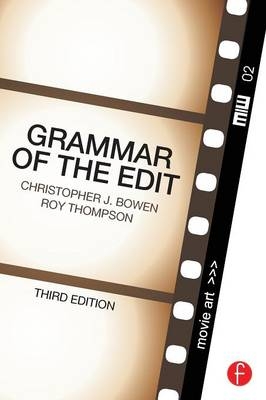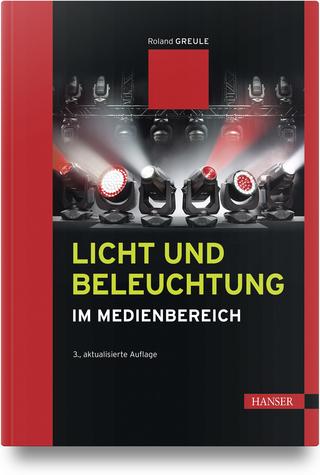
Grammar of the Edit
Focal Press (Verlag)
978-0-240-52600-3 (ISBN)
- Titel erscheint in neuer Auflage
- Artikel merken
The companion website, www.focalpress.com/cw/bowen, offers further instruction with video examples of different editing choices, types of shot transitions, photographs to further illustrate concepts, and exercises to practice your editing craft.
New to this edition:
• Expanded discussions of the building blocks of editing
• Fresh illustrations and visual examples
• Updated appendices with helpful resources
• Exercises and projects to help you practice your skills
• End-of-chapter quizzes to test your grasp of key concepts
A simple and clear overview of the principles of editing, Grammar of the Edit, Third Edition will help you to think and "feel" like an editor. Together with its companion volume, Grammar of the Shot, these books are exactly what the beginning filmmaker needs to start producing professional quality material today!
Christopher J. Bowen has worked within the motion media industries for over 15 years as a cinematographer, editor, director, and educator. Currently, he is an Assistant Professor of film production and visual media writing at Framingham State University. Professor Bowen is also an Avid Certified Instructor, Creative Director at his own media production company, Fellsway Creatives, and author of the companion text, Grammar of the Shot, Third Edition. Roy Thompson (deceased) was a freelance director and frequently worked as a trainer for the Television Training Centre of Deutsche Welle, Berlin. He worked extensively in Europe, Africa, and Middle and Far Eastern countries. He was author of Grammar of the Shot, First Edition also published by Focal Press.
Introduction
Chapter 1 Editing Basics
A Little Editing History
What Factors May Impact Your Editing Choices?
The Basic Editing Transitions
Stages of the Editing Process
Review
Chapter 2 Understanding the Footage
Basic Shot Types
Shot Descriptions
Increasing Shot Complexity
Simple Shots
Complex Shots
Developing Shots
Reviewing the Footage-Selecting the Best Shots
What Could Make or Break a Shot?
Focus
Audio Quality
Exposure and Color Temperature
Framing and Composition
Screen Direction
180 Degree Rule/Axis of Action
30 Degree Rule
Matching Angles
Matching Eye-Line
Continuity of Action
Continuity of Dialogue
Performance
Be Familiar with All the Footage
So How Does All of This Help You?
Review
Chapter 3 When to Cut and Why?
What Factors Help Make a Transition a Good Edit?
Information
Motivation
Shot Composition
Camera Angle
Continuity
Sound
Is there a Right or Wrong Reason for a Cut?
Review
Chapter 4 Transitions and Edit Categories
The Cut
The Dissolve
The Wipe
The Fade
The Five Major Categories of Edit Types
Will I Be Quizzed on Any of This?
Review
Chapter 5 General Practices for Editors
Sound and Vision are Partners and Not Rivals
A New Shot Should Contain New Information
There Should Be a Reason for Every Edit
Observe the Action Line
Select the Appropriate Form of Edit
The Better the Edit, the Less It Is Noticed
Editing is Creating
Review
Chapter 6 Working Practices
Working Practices
Review
Chapter 7 The Final Cut: Additional Editing Topics You are Bound to Encounter
Additional Editing Terms
Making Your Way into the World of Editing
Digital Workflow
The Role of an Assistant Editor
In Conclusion
Review
Glossary
Index
| Zusatzinfo | 104 Line drawings, black and white; 199 Halftones, black and white |
|---|---|
| Verlagsort | Oxford |
| Sprache | englisch |
| Maße | 152 x 229 mm |
| Gewicht | 401 g |
| Themenwelt | Kunst / Musik / Theater ► Film / TV |
| Sozialwissenschaften ► Kommunikation / Medien | |
| ISBN-10 | 0-240-52600-7 / 0240526007 |
| ISBN-13 | 978-0-240-52600-3 / 9780240526003 |
| Zustand | Neuware |
| Informationen gemäß Produktsicherheitsverordnung (GPSR) | |
| Haben Sie eine Frage zum Produkt? |
aus dem Bereich



